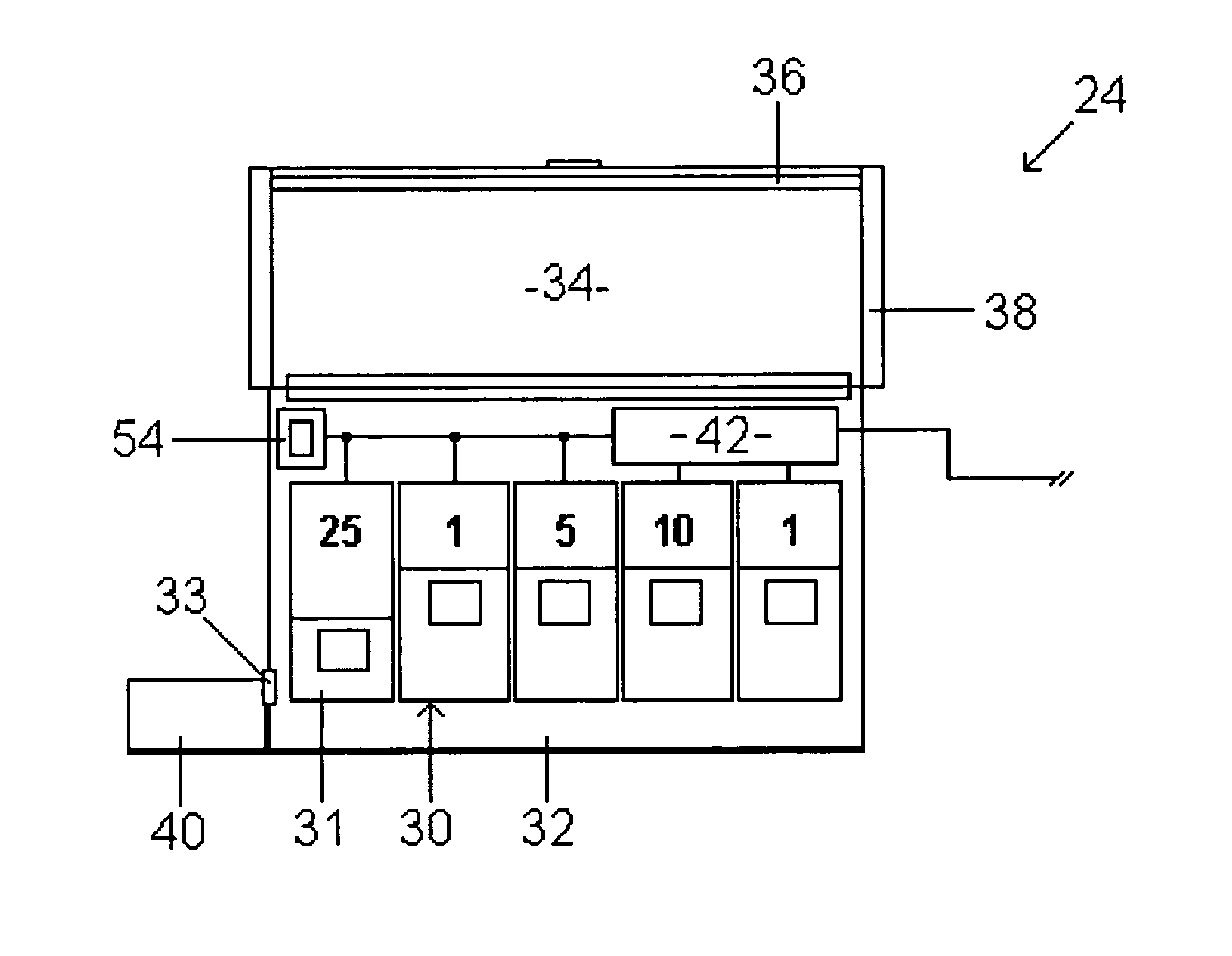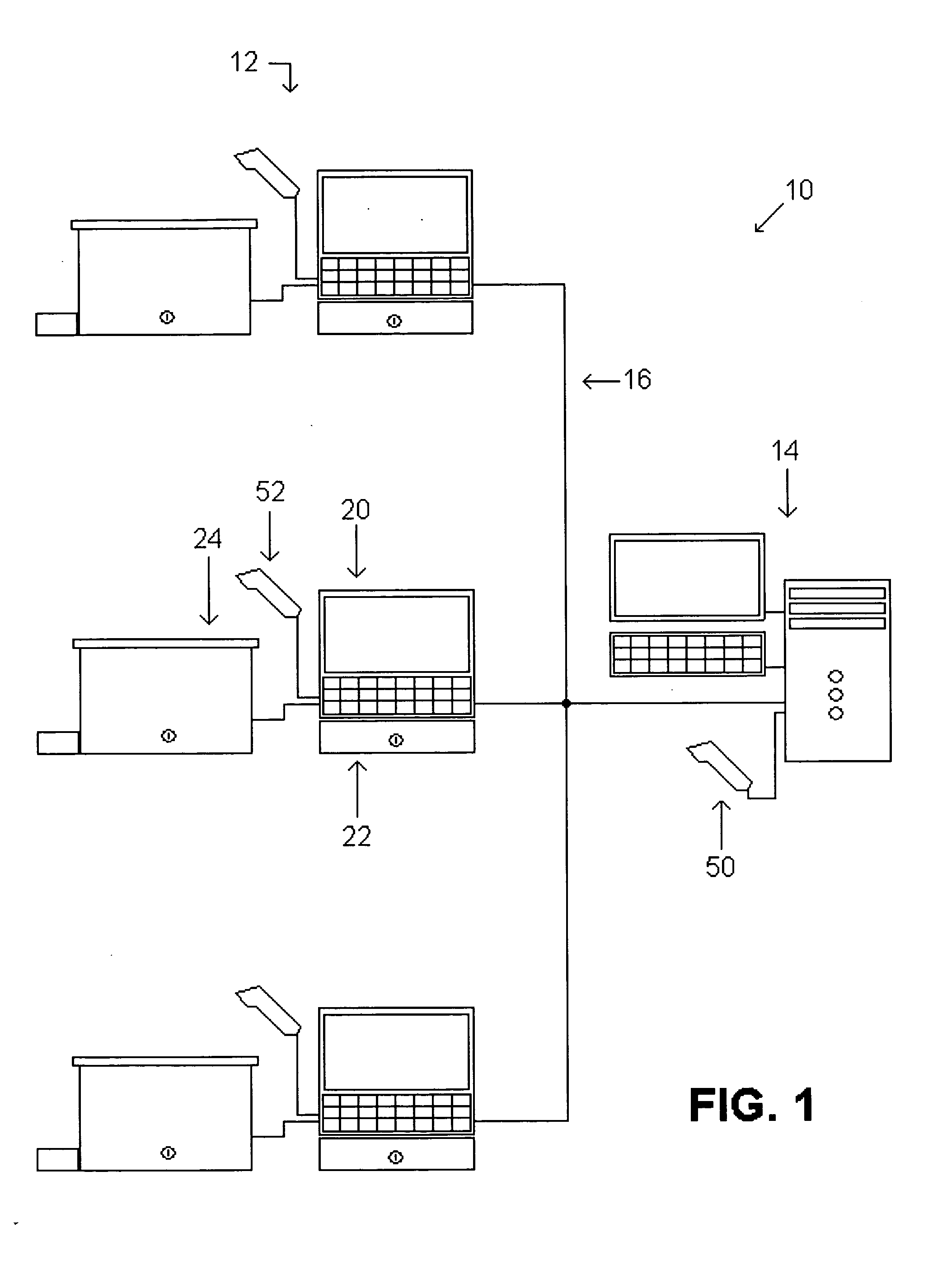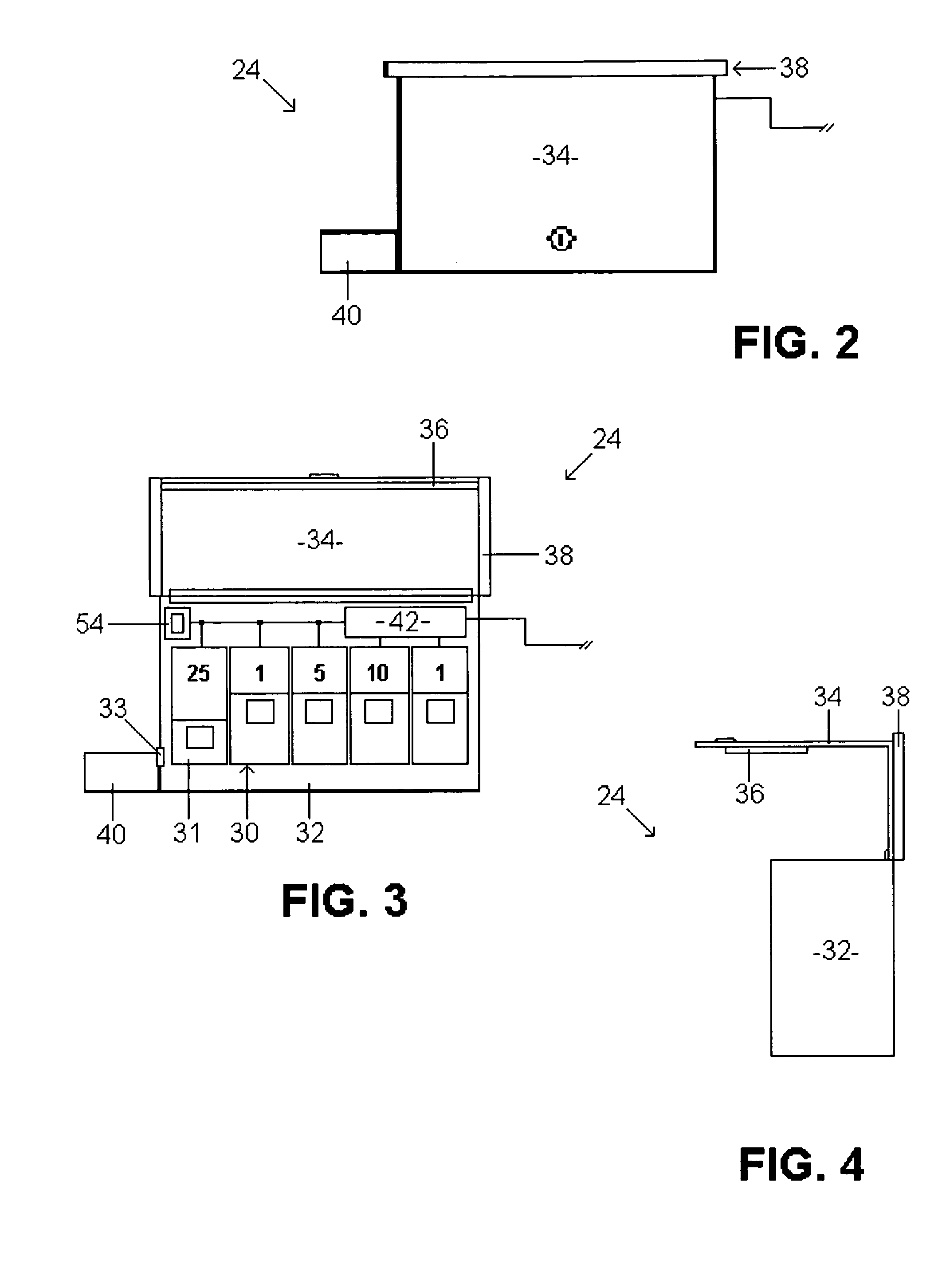System and method for managing dispensation and attribution of coins
a system and coin technology, applied in the field of systems and methods for managing coins, can solve the problems of increasing overall costs, increasing time and labor costs, and requiring manual accounting of accounting personnel, so as to achieve easy and quick reconciliation, increase control, accountability and security, and substantial time and labor savings
- Summary
- Abstract
- Description
- Claims
- Application Information
AI Technical Summary
Benefits of technology
Problems solved by technology
Method used
Image
Examples
Embodiment Construction
, below.
BRIEF DESCRIPTION OF THE DRAWING FIGURES
[0021] A preferred embodiment of the present invention is described in detail below with reference to the attached drawing figures, wherein:
[0022]FIG. 1 is a system diagram showing various components and relationships therebetween in a preferred embodiment of the system of the present invention;
[0023]FIG. 2 is a front elevation view of a preferred embodiment of an automated coin dispensing machine component of the system of FIG. 1, wherein the coin dispensing machine component is shown closed;
[0024]FIG. 3 is a front elevation view of the coin dispensing machine component of FIG. 2, wherein the coin dispensing machine component is shown open;
[0025]FIG. 4 is a side elevation view of the coin dispensing machine component of the system of FIG. 3; and
[0026]FIG. 5 is an isometric view of the coin dispensing machine component of the system of FIG. 3.
DETAILED DESCRIPTION OF A PREFERRED EMBODIMENT
[0027] With reference to the figures, a s...
PUM
 Login to View More
Login to View More Abstract
Description
Claims
Application Information
 Login to View More
Login to View More - R&D
- Intellectual Property
- Life Sciences
- Materials
- Tech Scout
- Unparalleled Data Quality
- Higher Quality Content
- 60% Fewer Hallucinations
Browse by: Latest US Patents, China's latest patents, Technical Efficacy Thesaurus, Application Domain, Technology Topic, Popular Technical Reports.
© 2025 PatSnap. All rights reserved.Legal|Privacy policy|Modern Slavery Act Transparency Statement|Sitemap|About US| Contact US: help@patsnap.com



